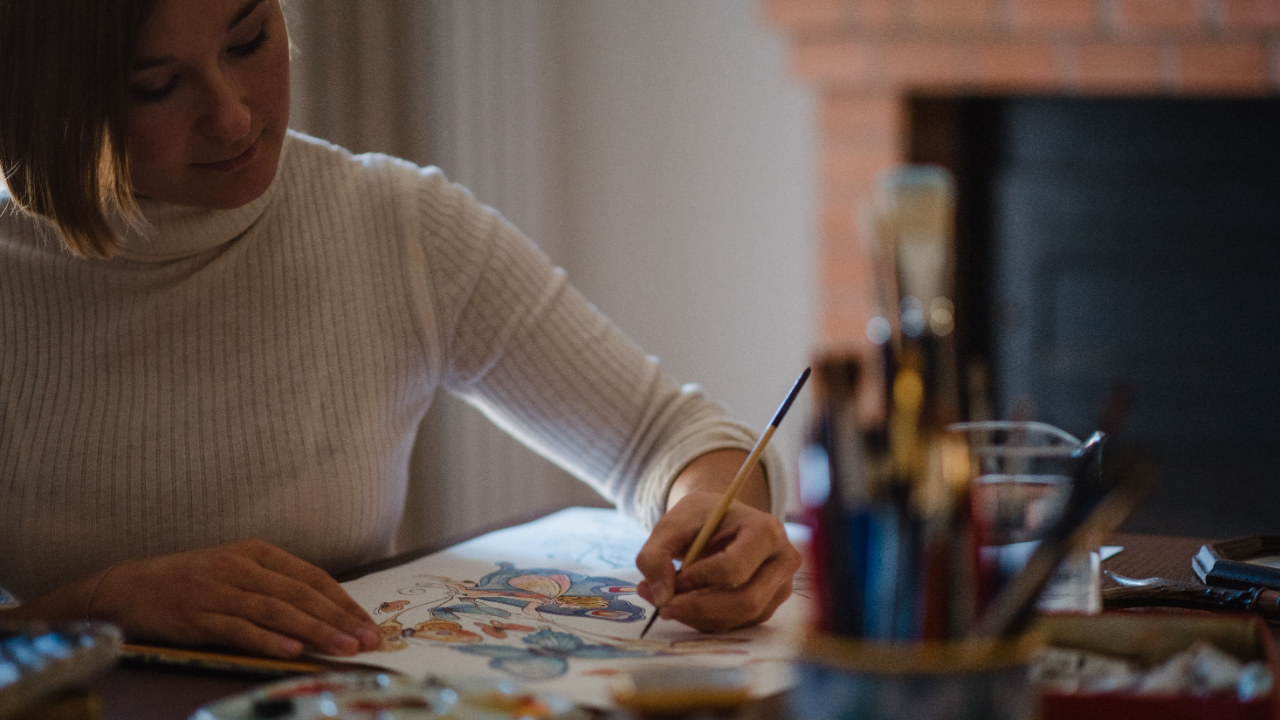
Best Art Supplies for Botanical Watercolor Painting
Choosing art supplies can be tricky! There are so many options out there for different needs, levels, and price ranges. Art supplies choice is also a very personal thing so my ideal list may not necessarily work for someone else but I will try to explain my choice and give some alternative options when possible. So let’s dive in. Here is the list of my favorite art supplies after over 10 years of trial and error:)
- Watercolor paper. In my previous blog post, I explained why in my opinion, watercolor paper is the most important thing in your toolbox.
My favorite paper is Arches 100 % cotton paper, 300 gsm with a satin finish. It’s one of the most expensive papers available, but I think it’s worth its price. My alternative to Arches is Fabriano Artistico 100 % cotton paper, 300 gsm with a satin finish. It’s also a high-quality paper, and I like that it’s available in 2 colors: pure white and traditional white. I love traditional white because it has a slightly yellowish tone, which gives the work a particular elegance.
If I want to try some crazy creative experiments, I usually have a stack of less expensive cellulose or cotton paper. I usually use Canson watercolor paper for these needs.
If you’re a beginner or don’t have a big budget, try cheaper papers before upgrading to the premium brands.
- Watercolor paint. Watercolor is available in pans and tubes. The advantages of pans are that they’re easy to bring with you and they’re usually less expensive than tubes. Disadvantages: you need to add water or spray them with water to activate the pigment before painting. Pans can quickly get dirty when you paint. You need to clean it from other colors from time to time to prevent dirty color. Advantages of tubes: The color in tubes always remains pure. You don’t need to activate it before painting, you can use it right after squeezing some color into your palette. Disadvantages: the lid can get stuck to the tube if you don’t clean it after each squeezing. Sometimes you squeeze more than you need. My favorite brands, from cheapest to the most expensive: 1. Nevskaya Palitra. It’s a Russian brand, and it’s quite inexpensive compared to other professional watercolor brands. The basic set of 24 would be enough for beginners. 2. Winsor & Newton. A 12 or 24 set is a good start, and you can buy more separate colors in the future if you need them. It’s a more expensive and higher quality brand. 3. Daniel Smith. Premium and the most expensive watercolor brand I have but also my favorite one. High-quality pigments, some are made with natural minerals. I don’t think it’s reasonable to buy a whole set of Daniel Smith watercolors because standard colors that usually go into these sets can be found in other brands for a cheaper price. I would suggest buying a few special colors you don’t have in your regular set and test it. If you’re looking for colors with granulation, try the Lunar series.
- Watercolor brushes. I use synthetic brushes with sharp tips. In my opinion, if you don’t have a big budget, you can save on brushes rather than saving on other art supplies. In my opinion, the brand doesn’t really count that much, but the ones I like are - da Vinci, Tintoretto, and Etcht. Make sure to have at least 3 brushes (a small one, a medium one, and a big one). You can always buy more in the future if you feel the need.
- Palette. I suggest ceramic palettes with sections for different colors. I don’t like plastic palettes because watercolor paint behaves differently. If you can’t find a ceramic palette, you can use a regular white ceramic plate instead.
- Pencils. I usually use H (hard), HB (medium), and B or 2B (soft) pencils for all my needs. My favorite brand is KOH-I-NOOR.
- Erasers. I use a regular and kneaded (soft) eraser by KOH-I-NOOR.
- Optional: masking fluid if I need to mask some areas of your drawing while painting. My favorite brand is Winsor & Newton.
- Optional: light pad. I didn't sketch directly on my watercolor paper. Instead, I sketch on regular paper and then transfer my drawings to watercolor paper using a Lightbox or tracing paper. I have an A3 Lightbox that I regularly use in my work.
This is the complete list of the art supplies that I use on a regular basis. This particular set of tools was developed and perfected throughout the years and trial and error, so I hope it will save you time and money and get the maximum out of your art supplies. If you have other tools or brand suggestions, please leave them in the comments. I’m always curious to learn about new art supplies!


